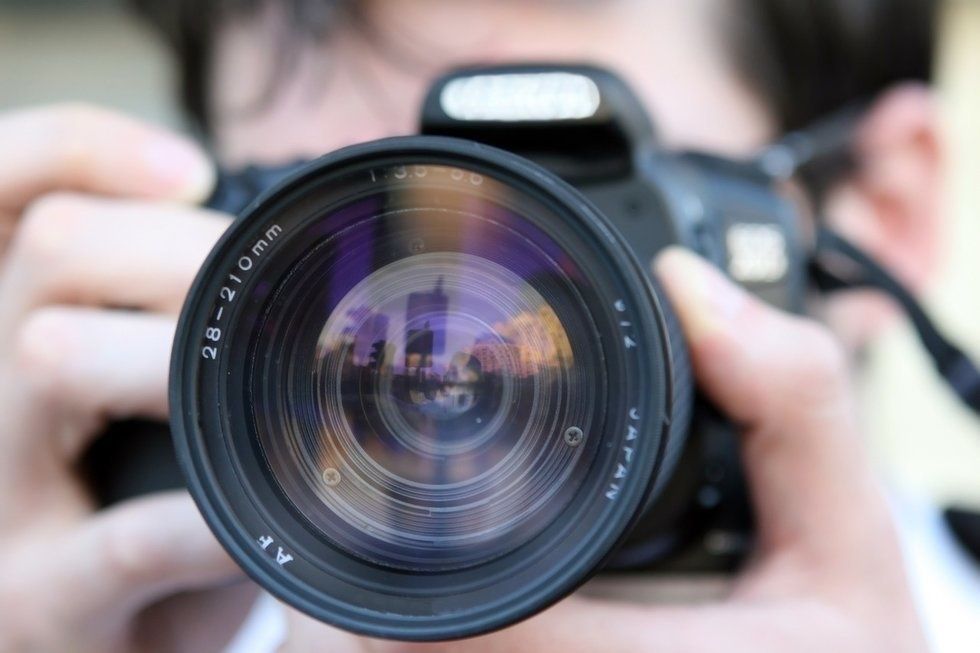Self-tapes have taken the acting industry by storm, and eco-casts and self-submits have been popping up everywhere. There is a huge convenience factor for casting directors and actors in this — not having to travel, not having to book space and the ability to film outside of the confines of an audition slot.
However, there are drawbacks to this method of auditioning. There isn't a lot of direction when you're filming on your own, and you can easily miss the mark on the style they are looking for. Unfortunately, that can't be helped, but your camera setup and basic techniques can make your acting pop.
Many times, little things like clutter in the space or video quality can lead to your tape being scrapped — even if the performance is excellent. I always prefer to go to a studio so that I can just film without having to focus on any technical elements and focus on acting, but that's not always available for me on short notice.
There are many studios in New York that you can pay a membership to tape in, but here are some tips in case you have to film at home.
Set Up Your Frame Correctly
Always set up your frame horizontally. The cameras on phones are great nowadays, and they can pass for studio quality as long as you don't give it away. A vertical frame is a dead giveaway that it's on a phone. Casting prefers horizontal because it is closer to what the actual footage is going to look like, giving them a better sense of who they should cast.
Set up your frame from your chest to an inch or so above your head. This is the standard for what they'd like to see. If it isn't originally filmed this way, you can always punch in when editing.
Consider Your Background
In small apartments, it can be difficult to find a clean space to tape. I personally have designated a clutter-free wall that I can use at any time instead of having to move things around.
If that's not possible for you, you might want to invest in a drop setup. This setup is basically a stand, and you can add a sheet or a paper background to it to cover up anything behind it. Make sure the sheet is wrinkle-free.
If you can, I would paint that section of the wall grey or blue. These are standard colors for self-tapes. Anything too dark often makes dark hair fade into it. Casting doesn't love this because it has a floating-head effect.
Invest In Lighting
Lighting can be the most difficult part of filming at home. Often, lamps or other lights can create too much shadow or look too "source-y," making the tape look amateur or distracting.
I would set up a three-point lighting setup. This means a light on each side, angled at 45 degrees toward the actor's face, with one in front. This way, they are lit and don't have shadows.
Investing in cheap clip lights or a desk lamp can also work. But you will have to diffuse the light with a piece of paper softening the look of the light.
Find A Reader
Finding someone to read with you on short notice can be a challenge, especially if they aren't an actor and have to help you with the setup. I try my best to make it easy for them, and they are doing me a favor after all. Make it as comfortable for them as you can. Then it's your turn to focus. Do what you need to do as a performer.
Try running the lines with them a few times to put you both at ease. Believe it or not, it can be pretty nerve-wracking for them too. They don't want to mess up your opportunity.
Then just make sure they stand to the left or right of camera so it doesn't look like you're speaking straight into it, and so their voice doesn't overpower yours. Have some fun.
Stock Up On Shots
I've noticed in the past that little things like full-body shots, candid shots and photos of hands can blow up an audition. Sometimes, in the crunch for time, I can't get these shots on time — or maybe there is too much clutter to get it right.
I've learned to do these beforehand and just save them. I have photos stocked of my manicured hands or full-body shots, just in case. They've been lifesavers a few times. They are all still of me, but they show me at my best — especially if I don't have the time to run out for a mani.
I hope all of this helps. I've done many self-tapes that just weren't up to par technically and ended up being a waste of time. Pretty much everything up there is industry standard and has been reiterated by my managers several times. These will make sure that you're on the right track and save you a lot of time at the end of the day.




































